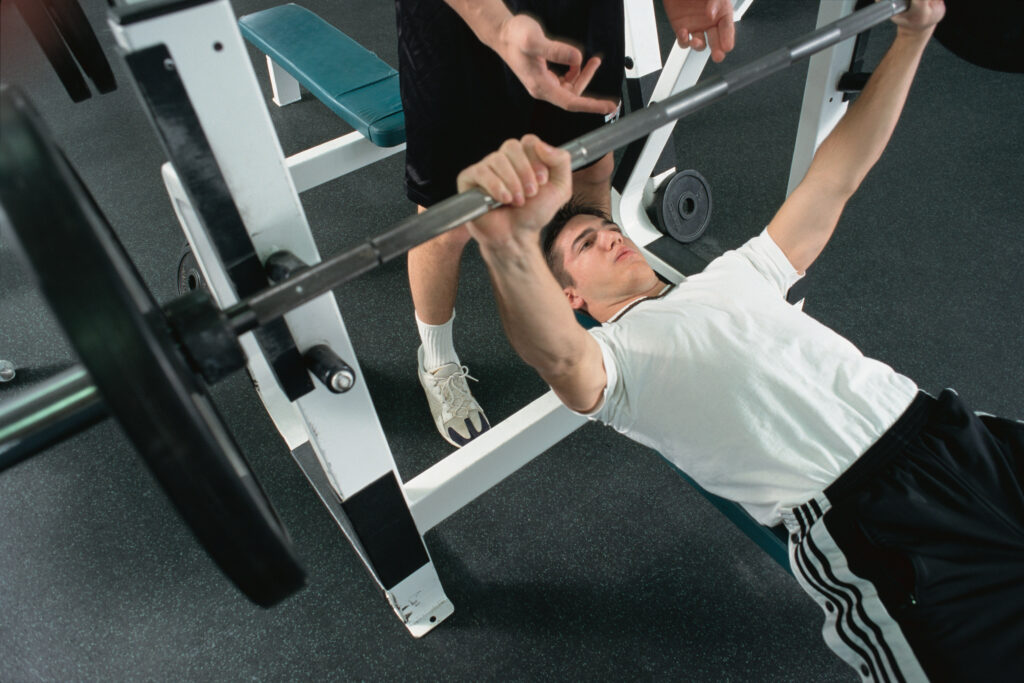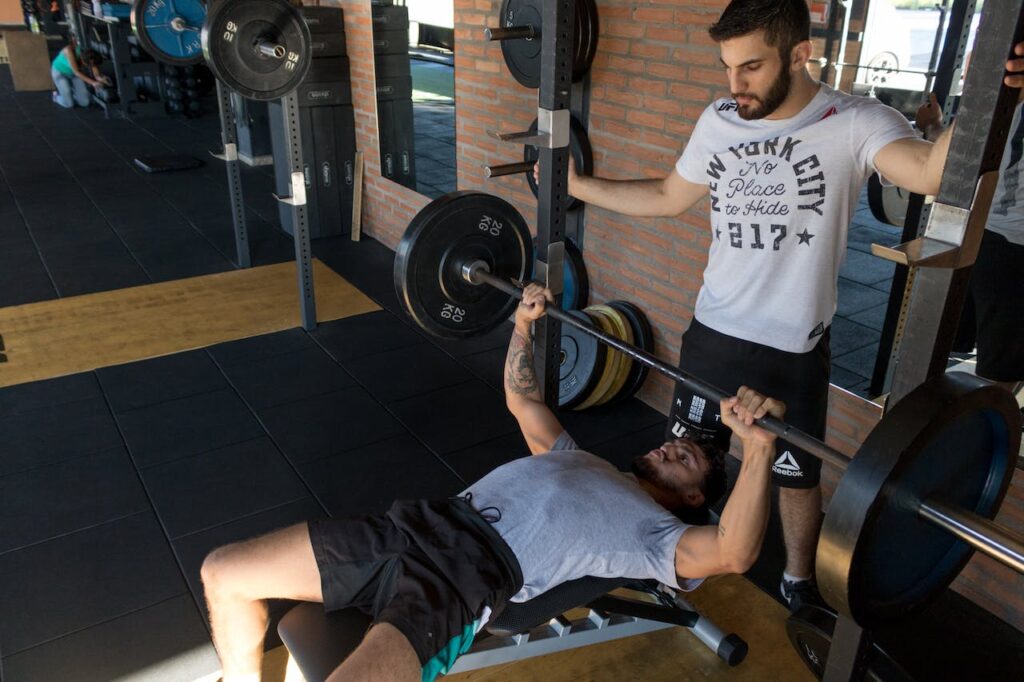Lifting 220 Pounds in Bench Press: Success Story and Training Protocol.
At present, lifting 220 pounds in bench press is just a warm-up weight for me, used before the main sets. But not long ago, a hundred seemed an unattainable goal. Lifting such weight seemed impossible. However, with perseverance and a study of the anatomy of the process, I quickly achieved results. Next, I will describe a training protocol that will help you succeed in bench press. But before that, let’s discuss a few aspects that will make the process more efficient and safer. The main difference in this technique from bodybuilding lies in the starting position with the shoulder blades retracted. Do not look at powerlifters who perform the movement in a “bridge” style, resembling a wheel. They do it to comply with competition rules. However, for those who aim for real strength, not judge approval, I will tell you how to develop strength in this exercise. Pressing as bodybuilders do—with a straight back and sometimes with raised legs—is also not recommended. It is possible, and the workout protocol won’t change much, but there is a risk of injury that I try to eliminate from my workouts. The risks include:

- Injury to the shoulder joint.
- Injury to the lumbar, thoracic, and cervical spine sections. Therefore, for working with lighter weights for muscle hypertrophy, it is recommended to use a bodybuilding style, and for strength development, use powerlifting. The difference in muscle work is small and easily compensated with additional exercises, which I have also included in the protocol. Bench Press Technique in Powerlifting I’ll emphasize once again: do not look at “professional” powerlifters who bend like gymnasts. The main thing is the correct position on the bench—lie down so that your feet are on straight feet, creating a stable support, and the shoulder blades are retracted from the beginning of the exercise to placing the barbell on the racks. If the shoulder blades are correctly retracted, the shoulders will naturally drop, and the lower back will arch. The head and buttocks should snugly touch the bench. When removing the bar, try to avoid the shoulder blades spreading. Or choose a position under the bar to maintain the position. When lifting the bar independently, rely on your legs and press the pelvis against the bench after the bar returns to the starting position—above the chest. The pelvis should remain pressed before the start of the first repetition. Lower the bar to the lower chest area. Control the elbows so that they do not spread wide during lowering and lifting the bar. Training Protocol (Program) to Achieve a 100kg Bench Press There are many programs for bench press, but if you break them down, the essence is the same—you need to press! Press often, press a lot, and press constantly. Recent studies show that the key factor for strength and muscle growth is the weekly training volume and intensity. Thus, you can do three workouts with 150 barbell lifts and a total weight of 20 tons lifted (it’s not as scary as it may seem). Or do five workouts with 90 barbell lifts and a total weight of 12 tons lifted. The result will be roughly comparable, but in the second case, you will have to visit the gym more often, but you will get less tired in it. I have tried both options for myself. Both are effective. But since I train in the morning before the workday, I prefer the second option—more often, but less. So, here are the mandatory exercises for progress in bench press and the number of repetitions per week. Distribute them depending on the number of workouts per week, starting from a minimum of three. And then you can even do it every day. With the right intensity (weight on the barbell), nighttime sleep will be enough for full recovery. By the way, about sleep! Without a sleep regimen, progress will be slow, and injuries will come faster. Sleep until fully rested, especially from 23:00 to 2:00 when the body is actively recovering. This could be the subject of a separate article. Just know this and use it.
Training Protocol to Achieve a 100kg Bench Press: Alternating Heavy and Light Days Weekly Training Program: Heavy Day:
- Three warm-up sets for 8-10 light repetitions.
- Four working sets. The weight in each subsequent set should be higher than in the previous one. The number of repetitions is no more than 3.
- If you easily lift the barbell 3 times in the last set, add 2.5 kg in each working set on the next workout and work with this weight until you can easily lift it 3 times in the last set.

Light Day:
- Three warm-up sets for 8-10 light repetitions.
- Four sets with the working weight. The weight does not change. Do five repetitions each, making it very difficult in the fourth set.
- If it was easy, increase the working weight by 2.5 kg on the next workout and continue in this mode until it becomes easy.
Additional Exercises (in each workout):
- Incline Bench Press – 1 warm-up set, 4 sets of 5-8 repetitions.
- Dips with Weight – 1 warm-up set, 4 sets of 5-8 repetitions.
- Weighted Pull-ups – 1 warm-up set, 4 sets of 5-8 repetitions.
- Dumbbell Lateral Raises – 1 warm-up set, 4 sets of 12 repetitions.
- Overhead Press – 1 warm-up set, 4 sets of 5-8 repetitions.
- Dumbbell Bench Press on Incline Bench (45 degrees) – 1 warm-up set, 4 sets of 5-8 repetitions.
- Seated Dumbbell Press – 1 warm-up set, 4 sets of 5-8 repetitions.
- French Press Lying Down – 1 warm-up set, 4 sets of 8-12 repetitions.
- Any Bicep Exercise – 1 warm-up set, 4 sets of 12 repetitions.
- Leg Raises on the Bar – Maximum number of repetitions. The weight in exercises should be heavy enough so that the last repetition in the last set requires effort. If you haven’t increased the weight in two weeks and have completed the required number of repetitions, add weight.
Success secret – regularity of workouts, good sleep, and, of course, tasty dumplings. Good luck in achieving your first hundred! P.S. I train according to this program on the way to 150 kg


